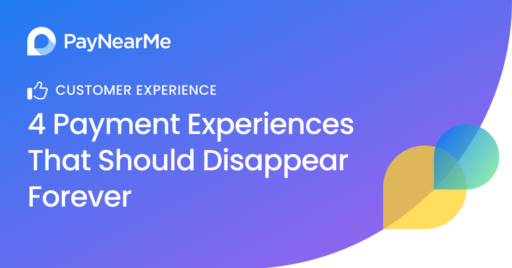3 Methods for Successful Healthcare Billing
An estimated 30 percent (or $328B) of all provider revenue came out of patients’ own pockets in 2012, and with patient financial responsibility on the rise due to high deductible and high co-insurance plans, collecting on these payments continues to be a hot issue for the health care industry.
In fact, improving consumer billing and payments was a main focus at the Healthcare Financial Management Association’s ANI 2014 Conference. Here are the three most promising best practices we heard at the show:
To maximize successful collections, several presenters, including Lori Szymonowicz, senior director of patient financial services at Thomas Jefferson University Hospitals, and Travis Mendenhall, manager of revenue cycle at Gwinnett Hospital System, advocated a multi-pronged approach to consumer billing:
1) Point-of-Service Information and Collections
The goal is for the provider to implement processes and technology that will empower staff to inform patients of their financial obligations and collect payments on location.
From a technology perspective, this means real-time communication with insurers and across internal systems to gather pricing and coverage information for the procedures to be performed, so that patients can be informed as soon as possible.
From a process perspective, this involves training staff to:
- Be comfortable with the technology, so that they are confident in the accuracy of the information they are relaying to the patient.
- Know when and how to approach patients regarding payments. For example, never approach patients that may be in great pain or discomfort, or those that have just received bad news about their health.
By focusing on proper POS collections, Jefferson University Hospitals has increased front-end payments by 31 percent in one year, and Gwinnett Hospital System has increased patient satisfaction by 86 percent.
2) Propensity-to-Pay and Payment Plans
There was overwhelming agreement at ANI 2014 on the need to use propensity-to-pay models and charity screening to differentiate between patients who can, and those who cannot pay for services. There is little benefit for the provider to spend resources trying to collect from patients who do not have the means to pay.
For those that do have the ability to pay their bills – either fully or partially – flexible payment plans and incentives encourage timely payment.
In fact, Mendenhall saw payment plans as such an important contributor of patient satisfaction that he recommended bringing them in-house to save on outsourced contingency fees and to tightly integrate them with the hospital’s payment website.
3) Patient-friendly follow-up and convenient ways to pay
Once the patient has left the hospital or the doctor’s office, it is important to provide them with patient-friendly bills, easy ways to get answers to billing questions, and convenient methods to pay those bills.
Patients across the board are not only becoming more comfortable with web services – they are expecting information and payments options online. For this reason, there was overall agreement on the benefits of implementing a patient portal that allows users to review covered and outstanding payments, check payment plans, get charity care info, read FAQs and easily make payments.
Providing these services online increases patient satisfaction while also reducing call center and operational costs such as those associated with the manual processing required to take credit card payments over the phone.
The Cash Remainder
The vast majority of these patient portals, however, accept payments only via credit or debit cards and eChecks. Where does that leave cash-preferring patients, or those who may not have bank accounts or credit cards?
It is important to keep in mind that it is not just low-income consumers who like to pay with cash. According to Compete’s study of Walmart’s very successful ‘Pay with Cash’ initiative, “Usage [of the initiative] appears to be highest among households with an income of $100k or greater.” In fact, only 14 percent of ‘Pay with Cash’ users reported not owning a credit or debit card.
Though it may seem obvious, making payments easy for all patients is key to reducing the amount of unpaid patient debt, but many providers and payment platform providers are neglecting the cash-preferring segment of the customer population.
Through conversations at ANI 2014, we’re seeing an increased understanding of the importance of serving this segment, and many providers were pleasantly surprised at how easily a cash payment acceptance solution could be built into their existing processes and systems.
Let’s continue the conversation about how best to partner together to improve patient’s payment experience!
We will be attending Healthcare Payments Innovations and Reaching, Retaining and Serving Low-Income Beneficiaries in July. We would love to meet with you in person, so email me if you will be there!




